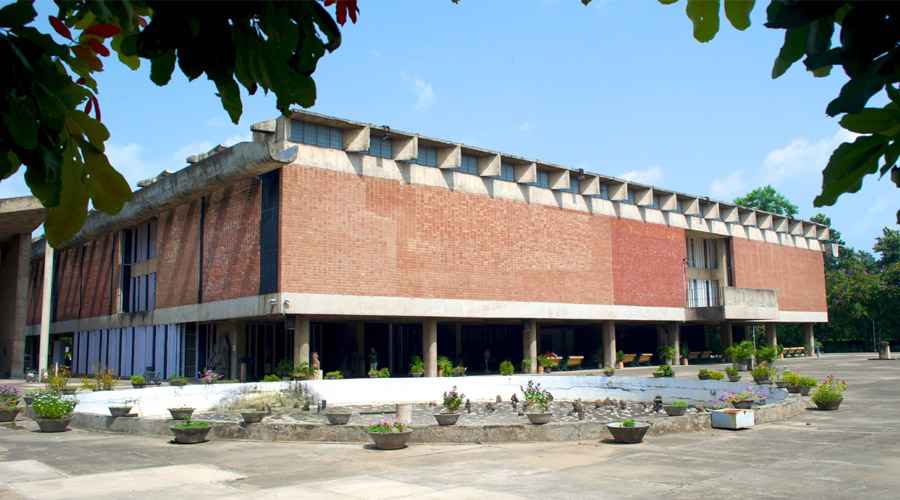India is home to countless breathtaking monuments that capture its diverse cultural, religious, and architectural heritage. Among these, one monument stands tall—both literally and figuratively—as a symbol of spiritual strength, peace, and renunciation: the Gomateshwara Statue. Also known as the statue of Bahubali, it is one of the tallest monolithic statues in the world and a revered icon in Jainism.
Located on Vindhyagiri Hill in the historic town of Shravanabelagola in Karnataka, this colossal statue is a marvel of ancient craftsmanship and profound religious significance, drawing devotees and tourists alike from across the globe.
Historical Background
View this post on Instagram
The Gomateshwara Statue was commissioned in 983 CE by Chavundaraya, a minister and commander of the Western Ganga dynasty. Chavundaraya was a devout Jain who sought to immortalize the spiritual ideals of Bahubali—a revered figure in Jainism known for his commitment to non-violence, renunciation, and enlightenment.
Carved out from a single massive block of granite, the statue stands approximately 57 feet (17 meters) tall, making it one of the largest free-standing monolithic statues in existence. This impressive feat of engineering and artistry has stood for over a millennium, weathering the elements while preserving the serene essence Bahubali represents.
Who is Bahubali?
Bahubali was the son of the first Tirthankara, Lord Rishabhanatha, and a significant figure in Jain philosophy. According to Jain legends, Bahubali engaged in a fierce battle of supremacy with his elder brother Bharata after the latter was crowned king. After winning the battle, Bahubali realized the futility of power struggles and worldly attachments. He renounced his kingdom and chose instead to seek spiritual liberation through deep penance and meditation.
Bahubali is said to have stood motionless in a meditative pose for a whole year—known as Kayotsarga or standing meditation—so deeply absorbed that vines and creepers grew around his legs and arms. His story epitomizes Jain values of self-discipline, detachment, non-violence, and the pursuit of enlightenment.
Architectural and Artistic Brilliance
Every inch of the Gomateshwara Statue radiates sublime artistry combined with spiritual symbolism. The statue portrays Bahubali standing upright in the Kayotsarga posture—arms resting at his sides, eyes half-closed in contemplative silence, emanating an aura of deep peace and detachment.
One of the most striking features of the statue is the realistic engraving of vines and creepers that coil around Bahubali’s legs and arms, symbolizing his long meditation and complete withdrawal from the material world. The serene expression on his face conveys a message of tranquility and spiritual awakening.
The statue rises from a beautifully carved pedestal with inscriptions in ancient Kannada, Tamil, and Sanskrit that describe its history and religious import. It can be reached by climbing more than 600 steps up Vindhyagiri Hill, providing visitors a panoramic view of the surrounding landscape and the quaint town below.
Religious Significance and Rituals
In Jainism, the Gomateshwara Statue is much more than a monumental sculpture; it is a sacred symbol that embodies the core teachings of the faith—peace, non-violence, renunciation, and liberation from the cycle of birth and death. Pilgrims consider visiting the statue an act of devotion and meditation, reconnecting with Jain ideals of spiritual purity.
The most spectacular ritual associated with the statue is the Mahamastakabhisheka, a grand anointing ceremony conducted once every 12 years. During this festival, thousands of devotees and monks gather to ceremoniously bathe the statue with sacred substances such as milk, turmeric, saffron, sandalwood paste, gold coins, and sugarcane juice. This visually stunning and spiritually uplifting event reinforces the statue’s significance as a living symbol of Jain faith and continues to attract international attention.
The last Mahamastakabhisheka took place in 2018, and the next is eagerly awaited in 2030. The ritual bathing is believed to purify the statue and rejuvenate the spiritual energy it radiates.
Cultural and Tourist Importance
Beyond its religious significance, the Gomateshwara Statue stands as a cultural icon and an outstanding achievement in ancient Indian sculpture. It highlights the skill and dedication of the artisans of the 10th century, who achieved exceptional precision carving a statue of this scale from a single granite block without modern tools.
Visitors to Shravanabelagola can explore the broader complex around Vindhyagiri Hill, which features numerous smaller Jain temples known as basadis dedicated to the Tirthankaras. The town itself is a hub of Jain heritage, making it a living museum of Jain art, architecture, and philosophy.
The climb to the statue is a memorable experience, with the thick greenery contrasting sharply against the imposing figure of Bahubali. Visitors often pause at various platforms along the steps to reflect and take in the breathtaking views of the countryside.
Symbolism — A Beacon of Spiritual Strength
The Gomateshwara Statue conveys multiple layers of meaning. It represents the triumph of spiritual victory over earthly desires. The vines representing nature’s embrace during meditation emphasize harmony with the environment and a life of austerity. The standing meditation posture symbolizes steadfastness and spiritual endurance.
In a world increasingly dominated by material pursuits and distractions, Bahubali’s example challenges individuals to cultivate detachment, self-awareness, and ethical living—principles deeply rooted in Jainism but also universally relevant.
Visiting Information
Shravanabelagola is accessible from major cities like Bangalore and Mysore, with road and rail connectivity. The nearest airport is in Bangalore, about 150 kilometers away.
There is no entry fee to visit the Gomateshwara Statue, but modest charges apply for camera usage or parking. The climb can be physically demanding, so visitors are advised to wear comfortable footwear and carry water. The best time to visit is during the cooler months between October and March or during the Mahamastakabhisheka festival for a truly memorable experience.
Conclusion
The Gomateshwara Statue is a breathtaking fusion of faith, art, and history—a towering monument dedicated to Bahubali, a revered Jain figure. It stands as a testament to spiritual resolve, non-violence, and the pursuit of truth. Its magnificent presence atop Vindhyagiri Hill not only inspires religious devotion but also awe for the ingenuity of ancient Indian craftsmen.
As one of the largest monolithic statues in the world, it continues to be a pilgrimage center for Jains and a beacon of India’s rich cultural tapestry. Through festivals like the Mahamastakabhisheka, the statue renews its spiritual significance every 12 years, drawing crowds who seek connection, inspiration, and tranquility.
The Gomateshwara Statue reminds all who witness it that true strength lies in peace, and the ultimate victory is over the self.


